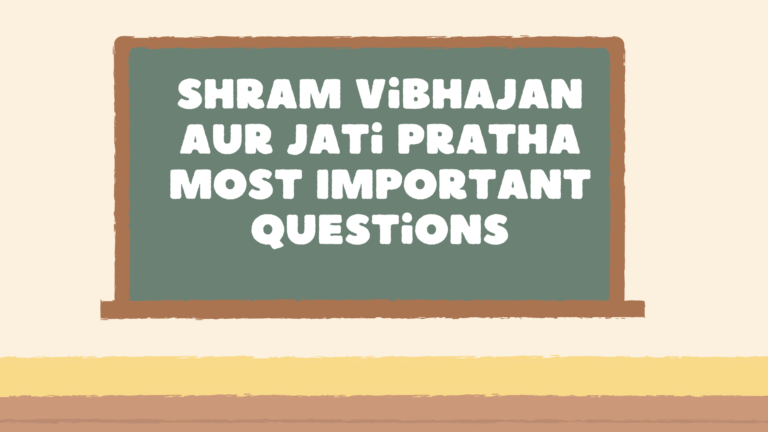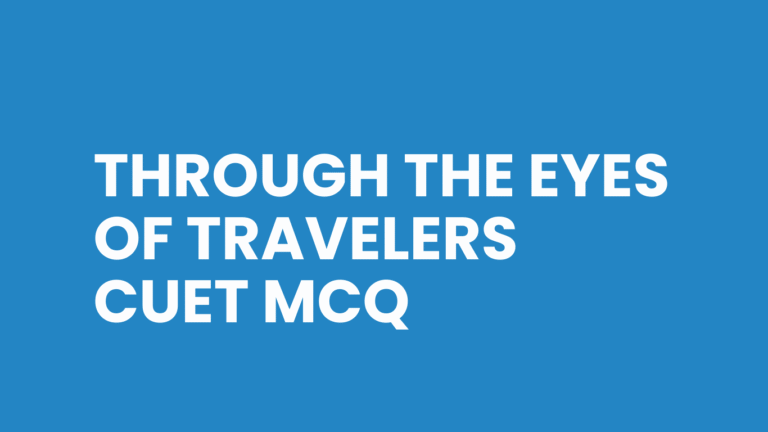Paths to Modernization Class 11 MCQ | Class 11 History Chapter 7 Important MCQ
This chapter of Class 11 history is significant from the examination point of view. This article will provide you with the Paths to Modernization Class 11 MCQ. Class 11 History Chapter 7 Important MCQs can be very helpful for your exam preparation. I had scored good marks in my own exams. Use these to strengthen your preparation.

CLASS 11 HISTORY CHAPTER 7 : PATHS TO MODERNISATION
Paths to Modernization Class 11 MCQ | Class 11 History Chapter 7 Important MCQ
Below are 50 multiple-choice questions based on the CBSE Class 11 History chapter Paths to Modernisation. Each question has four options, with the correct answer indicated at the end as an answer key.
ALSO READ : Writing and City Life Class 11 MCQ | Class 11 History Chapter 1 Important MCQ
- Which of the following best describes the Westernisation path to modernization?
A. Adopting only Western political systems
B. Complete rejection of indigenous traditions
C. Imitating Western science and technology while retaining some local culture
D. Total adoption of Western dress and food
Answer: C - Who coined the term “Four Stages Theory” of social progress?
A. Karl Marx
B. Auguste Comte
C. Herbert Spencer
D. John Stuart Mill
Answer: B - The concept of Positivism is associated with which thinker?
A. Montesquieu
B. Voltaire
C. Auguste Comte
D. Rousseau
Answer: C - According to Auguste Comte, the highest stage of human development is:
A. Theological
B. Metaphysical
C. Scientific (Positive)
D. Ethical
Answer: C - Which country is often cited as a model for state-led industrialization in the 19th century?
A. United States
B. Japan
C. Germany
D. Great Britain
Answer: C - The Meiji Restoration in Japan began in which year?
A. 1853
B. 1868
C. 1889
D. 1905
Answer: B - Which ruler spearheaded modernization during the Meiji era?
A. Emperor Meiji
B. Shogun Tokugawa
C. Daimyo Yoshida
D. Regent Saionji
Answer: A - Japan’s land tax reforms during Meiji aimed at:
A. Redistributing land to peasants
B. Ensuring state revenue through cash payments
C. Abolishing landlordism
D. Encouraging rice exports
Answer: B - The first railway line in Japan (1872) connected:
A. Tokyo and Osaka
B. Tokyo and Yokohama
C. Osaka and Nagoya
D. Kyoto and Kobe
Answer: B - Which thinker argued that the West had progressed through conflict between social classes?
A. Max Weber
B. Karl Marx
C. Émile Durkheim
D. Herbert Spencer
Answer: B - Marx’s stages of societal development end with:
A. Capitalism
B. Socialism
C. Communism
D. Feudalism
Answer: C - In Marxist thought, the bourgeoisie refers to:
A. Peasants
B. Industrial workers
C. Capitalist class
D. Clergy
Answer: C - The Ottoman Tanzimat reforms (1839–1876) aimed at:
A. Isolating the empire from Europe
B. Military expansion into Asia
C. Modernizing administration and law
D. Reviving Arabic as court language
Answer: C - Who was the Ottoman Sultan during the Tanzimat?
A. Abdul Hamid I
B. Mahmud II
C. Abdulmejid I
D. Selim III
Answer: C - The Young Ottomans demanded:
A. Absolute monarchy
B. Constitutional government
C. Islamic revivalism
D. Expansion into Europe
Answer: B - Which civil code did the Ottomans adopt in 1876?
A. German Civil Code
B. French Civil Code
C. British Common Law
D. Russian Code
Answer: B - Defensive Modernisation refers to reforms aimed at:
A. Strengthening society against external threats
B. Colonizing new territories
C. Promoting religious conversion
D. Abolishing standing armies
Answer: A - The Self-Strengthening Movement in China (1861–1895) was also known as:
A. May Fourth Movement
B. Hundred Days Reform
C. Westernisation Movement
D. Yangwu Movement
Answer: D - Which leader initiated the Western military techniques in China?
A. Li Hongzhang
B. Kang Youwei
C. Sun Yat-sen
D. Empress Dowager Cixi
Answer: A - The Tongzhi Restoration attempted to:
A. Return to Confucian orthodoxy while adopting Western weapons
B. Abolish Confucianism
C. Introduce democratic elections
D. Form alliance with Japan
Answer: A - Which reform was NOT part of China’s Hundred Days Reform (1898)?
A. Curriculum overhaul in schools
B. New legal codes
C. Land redistribution to peasants
D. Abolition of examination system
Answer: C - Economic nationalism in late 19th-century regions meant:
A. Boycott of all foreign goods
B. Building local industries to compete with imports
C. Adopting foreign currencies
D. Closing markets to domestic producers
Answer: B - Which of these is an example of cultural nationalism?
A. Promoting regional literature
B. Building railways
C. Establishing stock exchanges
D. Importing machines
Answer: A - The Young Turks movement emerged in:
A. Egypt
B. Persia
C. Ottoman Empire
D. India
Answer: C - Persia’s Cossack Brigade was organized by:
A. British officers
B. French officers
C. Russian officers
D. German officers
Answer: C - Which Persian ruler attempted constitutional reforms in 1906?
A. Nasir al-Din Shah
B. Mozaffar ad-Din Shah
C. Ahmad Shah Qajar
D. Reza Shah Pahlavi
Answer: B - The Boxer Rebellion (1900) in China was primarily:
A. Anti-imperialist uprising
B. Pro-Western movement
C. Marxist revolution
D. Peasant demand for land
Answer: A - Which treaty ended the Crimean War and influenced Ottoman reforms?
A. Treaty of Paris, 1856
B. Treaty of Berlin, 1878
C. Treaty of Utrecht, 1713
D. Treaty of Versailles, 1919
Answer: A - Japan’s Zaibatsu were:
A. Military units
B. Large industrial conglomerates
C. Feudal lords
D. Religious sects
Answer: B - The Shinto Revival in Meiji Japan aimed to:
A. Eradicate Buddhism
B. Strengthen national identity
C. Adopt Christianity
D. Promote Confucianism
Answer: B - Which Russian czar launched the Great Reforms (1860s)?
A. Nicholas I
B. Alexander II
C. Alexander III
D. Nicholas II
Answer: B - One of the Great Reforms in Russia was the emancipation of:
A. Serfs
B. Nobility
C. Merchants
D. Foreign residents
Answer: A - The Duma in Russia was established by:
A. Alexander II
B. Alexander III
C. Nicholas II
D. Lenin
Answer: C - In the Ottoman Empire, the Vilayet Law (1864) reorganized:
A. Military conscription
B. Provincial administration
C. Religious courts
D. Tax collection only
Answer: B - Which ideology argued that nations pass through a single developmental path?
A. Cultural relativism
B. Evolutionism
C. Nationalism
D. Conservatism
Answer: B - Dependency Theory criticizes modernization by arguing:
A. All societies follow the same path
B. Developing countries remain economically dependent on developed ones
C. Globalization is beneficial for all
D. Culture is irrelevant
Answer: B - Which of these thinkers critiqued Eurocentric models of development?
A. W.W. Rostow
B. Andre Gunder Frank
C. Max Weber
D. Auguste Comte
Answer: B - W.W. Rostow’s model of development includes how many stages?
A. Three
B. Five
C. Seven
D. Four
Answer: B - The first stage in Rostow’s Stages of Growth is:
A. Age of Mass Consumption
B. Take-off
C. Traditional Society
D. Drive to Maturity
Answer: C - According to Rostow, “Take-off” occurs when:
A. Society rejects tradition completely
B. Economy grows rapidly in one or two sectors
C. Population declines
D. Political institutions collapse
Answer: B - Which path to modernization emphasizes indigenous strengths and selective adoption of modern elements?
A. Westernisation
B. Conservative modernisation
C. Radical revolution
D. Neocolonialism
Answer: B - The policy of Self-Strengthening in China emphasized “Chinese learning for essence, Western learning for usefulness.” This phrase in Chinese is:
A. 文治武功
B. 中体西用
C. 和魂洋才
D. 大同世界
Answer: B - In 19th-century India, who proposed the idea of Incipient Modernity blending Western education with Indian culture?
A. Dadabhai Naoroji
B. Raja Rammohan Roy
C. Bal Gangadhar Tilak
D. Swami Vivekananda
Answer: B - The Sykes-Picot Agreement influenced modernization by:
A. Dividing Ottoman territories among colonial powers
B. Promoting industrialization in the Middle East
C. Establishing independent nation-states
D. Abolishing colonial rule
Answer: A - Which of these reforms in late Ottoman Empire aimed at equal rights for non-Muslims?
A. Hatt-i Sharif of Gülhane
B. Tanzimat
C. Hatt-i Hümayun
D. Kanun-ı Esasi
Answer: C - The German sociologist who argued that capitalism and Protestantism were linked was:
A. Karl Marx
B. Max Weber
C. Émile Durkheim
D. Ferdinand Tönnies
Answer: B - Which Chinese emperor backed the Hundred Days Reform?
A. Guangxu Emperor
B. Xianfeng Emperor
C. Tongzhi Emperor
D. Kangxi Emperor
Answer: A - Japan’s Land Tax Reform of 1873 fixed tax at what percentage of land value?
A. 10%
B. 3%
C. 5%
D. 1%
Answer: C - Which of these was a key goal of early Turkish reforms under Atatürk?
A. Re-establishing the Sultanate
B. Adopting the Latin script
C. Restoring the Caliphate
D. Promoting Arabic language
Answer: B - The term Jihad was reinterpreted in Ottoman reforms to mean:
A. Holy war against infidels
B. Economic struggle
C. Moral and social improvement
D. Political consolidation
Answer: C
Answer Key (Questions 1–50)
1 C 2 B 3 C 4 C 5 C 6 B 7 A 8 B 9 B 10 B
11 C 12 C 13 C 14 C 15 B 16 B 17 A 18 D 19 A 20 A
21 C 22 B 23 A 24 C 25 C 26 B 27 A 28 A 29 B 30 B
31 B 32 A 33 C 34 B 35 B 36 B 37 B 38 B 39 C 40 B
41 B 42 B 43 B 44 A 45 C 46 B 47 A 48 C 49 B 50 C






